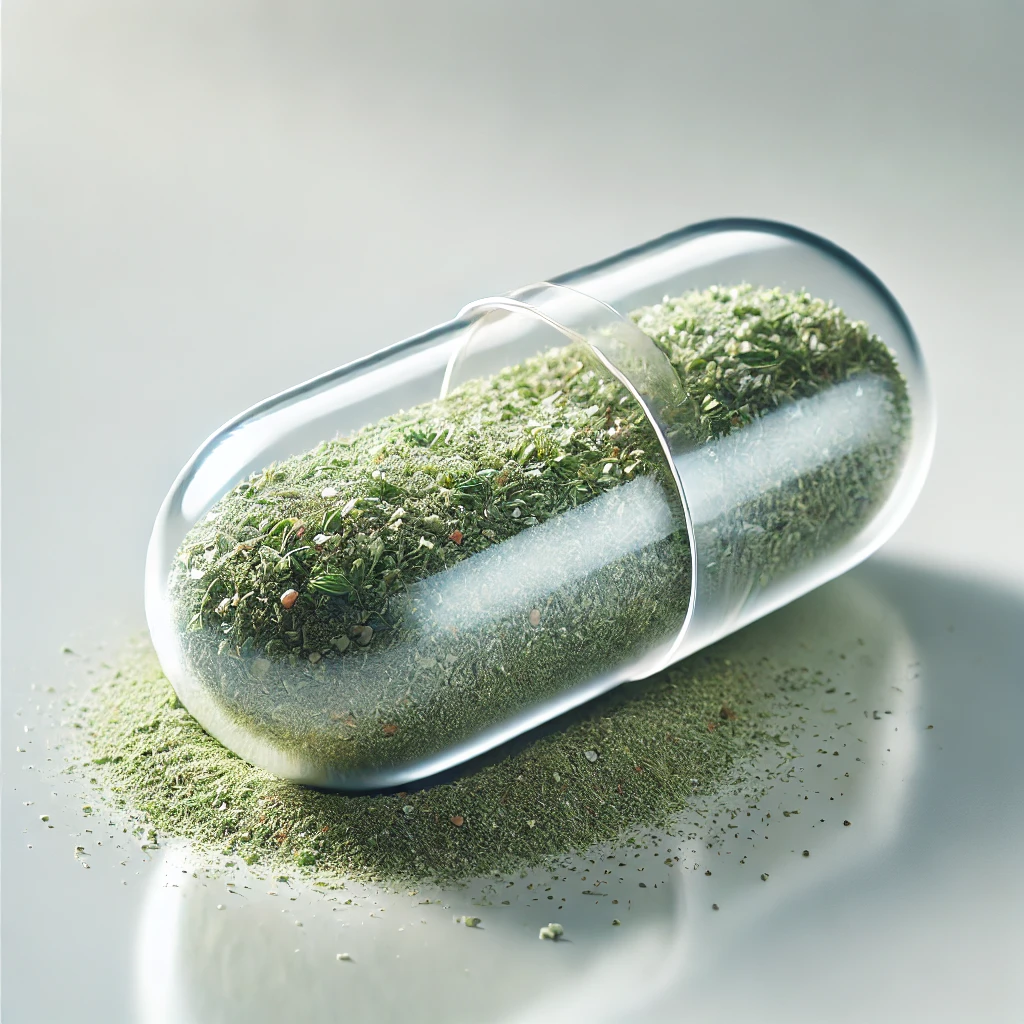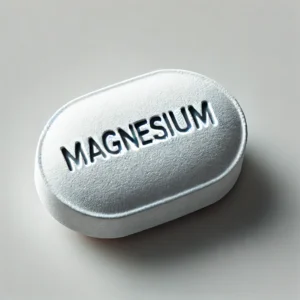
Silymarin (Milk Thistle) : The 7 Potential Benefits of this Wonder Herb
- Read time for this section: ~ 2 mins.
- Liver Health: Silymarin significantly improves liver enzyme levels (ALT, AST) in conditions like NAFLD and NASH. It reduces liver fat accumulation, improves liver stiffness, and increases antioxidant glutathione levels.
- Diabetes Management: Silymarin helps control blood sugar, reduce inflammation, and improve insulin function. It also improves fasting glucose, insulin resistance, and HbA1c levels, especially in older adults and diabetics.
- Cardiovascular Health: Silymarin improves cholesterol profiles, reducing total cholesterol, LDL, triglycerides, and increasing HDL, supporting heart health.
- Anti-inflammatory & Antioxidant: Silymarin reduces inflammatory markers like CRP and IL-6 and decreases oxidative stress indicators like MDA.
- Cancer Potential: Early research suggests silymarin may inhibit liver cancer cell growth, promote cancer cell death, and reduce tumor formation.
- Metabolic Syndrome: Silymarin improves liver enzyme levels, lipid profiles, and insulin function, supporting comprehensive metabolic health.
- Liver Protection from Drug-Induced Damage: Silymarin has been shown to protect the liver from damage caused by certain medications, such as those used in tuberculosis treatment, by reducing the risk of liver injury, especially during the initial phase of treatment.
- Silymarin Extract: The most common form, standardized to contain 70-80% silymarin, which is typically used in supplements for liver health support.
- Silymarin Phytosome: A more bioavailable form where silymarin is bound to phospholipids, improving absorption and effectiveness.
Dosages are based on studies identified in the review
- Common Range: 140 mg to 700 mg per day.
- Higher Doses: 400 mg to 600 mg daily showed more significant effects in studies.
- Duration of Use: Typically taken for 8 to 48 weeks, with noticeable benefits often seen after 12 weeks or more.
- Frequency: Usually taken in 2-3 divided doses daily.
- High Doses: Some studies used up to 2,100 mg daily, though this is less common.
- Example:
$38 for a bottle of 60 softgels. Taking 2 softgels daily will last ~ 2 months.
(Assuming 2 softgels provide a minimum of 400 mg of silymarin)
- Milk Thistle Seeds: The highest concentration of silymarin is found in the seeds of the milk thistle plant. Consuming milk thistle seeds directly or using them in teas or tinctures can provide a natural source of silymarin, though the concentration may be lower than in standardized extracts.
- Milk Thistle Tea: Although the silymarin content in tea may be lower, consuming milk thistle as a tea made from the seeds or leaves offers a more natural, whole-plant approach to obtaining it.
- However, to get a consistent and therapeutic dosage, supplements standardized for silymarin content (typically 70-80%) are often preferred over natural food sources.
- Possible side effects include mild gastrointestinal discomfort, headaches, and allergic reactions.
- Exercise caution if allergic to plants in the daisy family (ragweed, chrysanthemums).
- Potential interactions with liver-metabolized medications (some statins, anticoagulants, psychiatric drugs) and diabetes medications (may affect blood sugar levels).
- Not recommended for pregnant or breastfeeding women.
- Always consult a healthcare professional before use, especially if you have existing health conditions, are taking medications, or are undergoing medical treatments like chemotherapy.
Silymarin (Milk Thistle) : The 7 Potential Benefits of this Wonder Herb
What is Silymarin?
Silymarin, often referred to as milk thistle extract, has been a staple in traditional medicine for centuries, particularly for treating liver ailments. This compound is derived from the seeds of the milk thistle plant (Silybum marianum), a member of the Asteraceae family. Silymarin is not a single substance but rather a complex mixture of flavonolignans and flavonoids. The most abundant and biologically active component is silibinin, which accounts for 50-70% of the extract. Other key constituents include silybin A and B, silydianin, isosilybin A and B, and silychristin.
What makes silymarin particularly interesting to researchers and health enthusiasts alike is its impressive array of biological properties. It has been shown to possess antioxidant, anti-inflammatory, antifibrotic, and hepatoprotective effects. These properties have made silymarin a subject of extensive research in various fields of medicine, from liver health to cancer and diabetes management.
Health Benefits
1. Liver Health: A Natural Protector
Silymarin has shown significant potential in supporting liver health, particularly for those dealing with non-alcoholic fatty liver disease (NAFLD) or non-alcoholic steatohepatitis (NASH).
Yang and his team (2022) found that silymarin effectively reduces liver enzyme levels in NAFLD patients. They observed notable decreases in both ALT and AST, key indicators of liver health. Additionally, they noted reduced fat accumulation in the liver and improved liver stiffness, suggesting an overall positive impact on liver function.
Zhong’s group (2017) reported even more substantial reductions in these same enzymes. Interestingly, they found that silymarin was more effective when used alone rather than in combination with other treatments, highlighting its potential as a standalone supplement for liver health.
Mohammadi and colleagues (2024) added to these findings by not only confirming the reduction in liver enzymes but also noting an increase in glutathione levels. This is particularly significant as glutathione is a crucial antioxidant in the body, playing a vital role in liver health.
While Avelar’s team (2017) did observe some improvements in liver enzymes, they cautioned that these changes, though statistically significant, might not translate to substantial clinical benefits. This highlights the need for further research to fully understand the real-world impact of these improvements.
Kalopitas and his crew (2021) provided more encouraging results, reporting substantial reductions in liver enzymes. Importantly, these improvements were consistent regardless of dosage or duration of silymarin use, suggesting a reliable effect across different treatment regimens.
Malik’s group (2024) focused on metabolic dysfunction-associated steatotic liver disease and found that silymarin not only improved liver enzymes but also enhanced lipid profiles and showed potential in reducing liver fibrosis. These findings suggest that silymarin may offer comprehensive benefits for liver health.
Li and team (2024) rounded out the liver health findings by demonstrating silymarin’s ability to improve various markers of liver health, including reductions in fatty liver scores. This further supports the idea that silymarin offers broad-spectrum support for liver function.
2. Diabetes Management: Promising Potential
Silymarin has also shown promise in the realm of diabetes management.
Mehrjerdi’s team (2024) conducted an in-depth review of silibinin, the main component of silymarin, and its effects on diabetes. Their analysis of laboratory and animal studies revealed that silibinin could potentially help control blood sugar, reduce inflammation, improve insulin function, and support pancreatic cell health. These multifaceted effects suggest silymarin could be a valuable tool in diabetes management.
Xiao and colleagues (2020) brought human data to the forefront, reporting improvements in fasting blood sugar, insulin resistance, and HbA1c levels in people taking silymarin. These markers are crucial in assessing long-term blood sugar control, indicating silymarin’s potential in helping manage diabetes.
Soleymani’s group (2022) corroborated these findings, showing similar improvements in blood sugar and HbA1c. They noted that the effects appeared more pronounced in individuals over 50 and those already diagnosed with diabetes, suggesting silymarin might be particularly beneficial for certain demographics.
Mohammadi and team (2024) added to this body of evidence, confirming the blood sugar benefits in their analysis. They observed reductions in fasting blood sugar, insulin levels, and HbA1c, further supporting silymarin’s potential role in diabetes management.
3. Heart Health: Supporting Cardiovascular Well-being
Beyond its effects on liver health and diabetes management, silymarin has shown potential benefits for cardiovascular health.
Mohammadi’s team (2019) found that silymarin, especially when used in combination with other treatments, could significantly improve cholesterol profiles. They observed reductions in total cholesterol, LDL cholesterol, and triglycerides, along with an increase in HDL cholesterol. These changes are generally associated with improved cardiovascular health.
Soleymani and colleagues (2022) reported similar improvements in cholesterol profiles, reinforcing silymarin’s potential in supporting heart health.
Xiao’s group (2020) added to this evidence, confirming positive effects across various cholesterol markers. These consistent findings across multiple studies suggest that silymarin may play a role in supporting cardiovascular health.
Li and team (2024) provided a broader perspective, demonstrating silymarin’s ability to improve various markers related to heart health and metabolism. This comprehensive approach highlights silymarin’s potential to support overall metabolic health.
4. Fighting Inflammation and Oxidative Stress: A Protective Role
Silymarin has also demonstrated anti-inflammatory and antioxidant properties, which are crucial for overall health.
Bahari and colleagues (2024) found that silymarin could reduce levels of C-reactive protein (CRP) and interleukin-6 (IL-6), both key markers of inflammation. They also observed a decrease in malondialdehyde (MDA), an indicator of oxidative stress. These findings suggest that silymarin may help combat both inflammation and oxidative damage in the body.
Xiao’s team (2020) supported these findings, also noting a significant reduction in CRP levels. This consistent evidence points to silymarin’s potential role in managing inflammation within the body.
5. Protecting the Liver from Drug-Induced Damage
Silymarin has shown potential in protecting the liver from drug-induced damage, particularly in the context of tuberculosis treatment.
Tao and colleagues (2019) investigated silymarin’s effects on liver damage caused by tuberculosis medications. They found it could significantly reduce the risk of liver injury, especially during the first month of treatment. This suggests that silymarin might serve as a protective agent for the liver when patients are undergoing certain drug treatments.
6. Cancer-Fighting Potential: Early Research
Research into silymarin’s potential in cancer prevention and treatment, particularly for hepatocellular carcinoma (HCC), is still in its early stages but shows promising results. Mastron et al. (2015) conducted a comprehensive review of studies on silymarin and HCC, revealing intriguing findings:
In vitro studies (in test tubes) showed that silymarin could:
- Inhibit growth and proliferation of liver cancer cell lines
- Induce apoptosis and cell cycle arrest
- Modulate various cancer-related signaling pathways
In vivo studies (in living organisms like laboratory animal) demonstrated:
- Reduced tumor formation in animal models
- Decreased liver enzyme levels and oxidative stress markers
- Improved antioxidant status
Clinical studies (in humans) have shown mixed results:
- Some studies on HCV patients (at risk for HCC) showed reduced viral load and liver enzymes
- Other studies found no significant effects on liver disease progression
- Data specifically on HCC patients is limited
Dosages varied widely across studies:
- In vitro: 10-500 μmol/L
- In vivo: 50-700 mg/kg/day orally or 1000 ppm in diet
- Clinical: 140-700 mg three times daily orally, or 10-20 mg/kg/day intravenously
While these findings are encouraging, the researchers emphasize the need for more extensive clinical trials to establish silymarin’s efficacy and safety in cancer prevention and treatment. Challenges include poor bioavailability and the need for standardization of silymarin products. Future research should focus on optimizing delivery systems, determining optimal dosing strategies, and exploring potential combination therapies.
It’s important to approach these early results with caution, as effects observed in laboratory and animal studies may not directly translate to human patients.
7. Metabolic Syndrome: A Comprehensive Approach
Silymarin appears to address multiple aspects of metabolic syndrome simultaneously.
Li and team (2024) found that silymarin could improve various markers related to energy metabolism, liver health, and insulin levels. This suggests that silymarin might offer a comprehensive approach to managing metabolic syndrome.
Martinez and colleagues (2023) observed that in the majority of studies they reviewed, silymarin helped lower liver enzyme levels, particularly in individuals with NAFLD. They also noted benefits in some unexpected areas, such as in individuals dealing with COVID-19 or obesity, indicating silymarin’s potential to support metabolic health in various contexts.
Conclusion
Our exploration of silymarin has revealed its potential across various aspects of health, from supporting liver function to managing diabetes, cancer and cardiovascular health. This plant extract appears to offer a range of potential benefits. However, it’s important to approach these findings with a balanced perspective. While the research on silymarin is promising, many studies are still in their early stages. Recent meta-analyses note that the quality of evidence for many of silymarin’s effects is currently rated as low to very low. This underscores the need for further research to fully understand its impacts and efficacy.
Despite these limitations, the potential benefits of silymarin are noteworthy. It shows particular promise in supporting liver health, with multiple studies demonstrating its ability to reduce liver enzymes and improve liver function. The findings related to diabetes management and cardiovascular health are also encouraging, suggesting that silymarin could be a valuable complement to a healthy lifestyle. As research continues, we may gain a clearer understanding of silymarin’s role in supporting overall health and wellness.
Effective dosages used in the studies:
- Most common range: 140 mg to 700 mg per day
- Typical duration: 8 to 48 weeks
- Doses of 400 mg to 600 mg daily showed more significant effects
- Usually taken in 2-3 divided doses daily
- Some studies used up to 2,100 mg daily, but this was less common
- Effects were often more noticeable over longer duration of use (12 weeks or more)
Considerations
When considering purchasing silymarin supplements, look for products that clearly state the amount of silymarin or milk thistle extract per serving, as potency can vary significantly between brands. It’s also beneficial to choose supplements that have been standardized to contain a specific percentage of silymarin, typically around 70-80%.
Quality matters, so opt for reputable brands that undergo third-party testing for purity and potency. Be aware that silymarin is available in various forms, including capsules, tablets, and liquid extracts, so choose the form that best suits your preferences and needs. Additionally, some products may combine silymarin with other ingredients, which may or may not be desirable depending on your health goals. Lastly, always consult with a healthcare professional before starting any new supplement regimen, especially if you have existing health conditions or are taking medications, as silymarin can interact with certain drugs
References
- Bahari, H., Shahraki Jazinaki, M., Rashidmayvan, M., Taheri, S., Amini, M. R., & Malekahmadi, M. (2024). The effects of silymarin consumption on inflammation and oxidative stress in adults: A systematic review and meta-analysis. Inflammopharmacology, 32(2), 949–963. https://doi.org/10.1007/s10787-023-01423-6
- Calderon Martinez, E., Herrera, D., Mogan, S., Hameed, Z., Jangda, A. A., Khan, T. J., Mroke, P., Sajid, S., Shah, Y. R., & Baig, I. (n.d.). Impact of Silymarin Supplements on Liver Enzyme Levels: A Systematic Review. Cureus, 15(10), e47608. https://doi.org/10.7759/cureus.47608
- de Avelar, C. R., Pereira, E. M., de Farias Costa, P. R., de Jesus, R. P., & de Oliveira, L. P. M. (2017). Effect of silymarin on biochemical indicators in patients with liver disease: Systematic review with meta-analysis. World Journal of Gastroenterology, 23(27), 5004–5017. https://doi.org/10.3748/wjg.v23.i27.5004
- Kalopitas, G., Antza, C., Doundoulakis, I., Siargkas, A., Kouroumalis, E., Germanidis, G., Samara, M., & Chourdakis, M. (2021). Impact of Silymarin in individuals with nonalcoholic fatty liver disease: A systematic review and meta-analysis. Nutrition, 83, 111092. https://doi.org/10.1016/j.nut.2020.111092
- Li, S., Duan, F., Li, S., & Lu, B. (2024). Administration of silymarin in NAFLD/NASH: A systematic review and meta-analysis. Annals of Hepatology, 29(2), 101174. https://doi.org/10.1016/j.aohep.2023.101174
- Malik, A., Malik, M., & Qureshi, S. (n.d.). Effects of silymarin use on liver enzymes and metabolic factors in metabolic dysfunction-associated steatotic liver disease: A systematic review and meta-analysis. Canadian Liver Journal, 7(1), 40–53. https://doi.org/10.3138/canlivj-2023-0021
- Mastron, J. K., Siveen, K. S., Sethi, G., & Bishayee, A. (2015). Silymarin and hepatocellular carcinoma: A systematic, comprehensive, and critical review. Anti-Cancer Drugs, 26(5), 475. https://doi.org/10.1097/CAD.0000000000000211
- Mohammadi, H., Hadi, A., Arab, A., Moradi, S., & Rouhani, M. H. (2019). Effects of silymarin supplementation on blood lipids: A systematic review and meta-analysis of clinical trials. Phytotherapy Research, 33(4), 871–880. https://doi.org/10.1002/ptr.6287
- Mohammadi, S., Asbaghi, O., Afrisham, R., Farrokhi, V., Jadidi, Y., Mofidi, F., & Ashtary-Larky, D. (2024). Impacts of Supplementation with Silymarin on Cardiovascular Risk Factors: A Systematic Review and Dose–Response Meta-Analysis. Antioxidants, 13(4), Article 4. https://doi.org/10.3390/antiox13040390
- Mohammadi, S., Ashtary-Larky, D., Asbaghi, O., Farrokhi, V., Jadidi, Y., Mofidi, F., Mohammadian, M., & Afrisham, R. (2024). Effects of silymarin supplementation on liver and kidney functions: A systematic review and dose–response meta-analysis. Phytotherapy Research, 38(5), 2572–2593. https://doi.org/10.1002/ptr.8173
- Soleymani, S., Ayati, M. H., Mansourzadeh, M. J., Namazi, N., & Zargaran, A. (2022). The effects of Silymarin on the features of cardiometabolic syndrome in adults: A systematic review and meta-analysis. Phytotherapy Research, 36(2), 842–856. https://doi.org/10.1002/ptr.7364
- Tao, L., Qu, X., Zhang, Y., Song, Y., & Zhang, S. (2019). Prophylactic Therapy of Silymarin (Milk Thistle) on Antituberculosis Drug-Induced Liver Injury: A Meta-Analysis of Randomized Controlled Trials. Canadian Journal of Gastroenterology and Hepatology, 2019(1), 3192351. https://doi.org/10.1155/2019/3192351
- Xiao, F., Gao, F., Zhou, S., & Wang, L. (2020). The therapeutic effects of silymarin for patients with glucose/lipid metabolic dysfunction. Medicine, 99(40), e22249. https://doi.org/10.1097/MD.0000000000022249
- Yang, K., Chen, J., Zhang, T., Yuan, X., Ge, A., Wang, S., Xu, H., Zeng, L., & Ge, J. (2022). Efficacy and safety of dietary polyphenol supplementation in the treatment of non-alcoholic fatty liver disease: A systematic review and meta-analysis. Frontiers in Immunology, 13. https://doi.org/10.3389/fimmu.2022.949746
- Zare Mehrjerdi, P., Asadi, S., Ehsani, E., Askari, V. R., & Baradaran Rahimi, V. (2024). Silibinin as a major component of milk thistle seed provides promising influences against diabetes and its complications: A systematic review. Naunyn-Schmiedeberg’s Archives of Pharmacology. https://doi.org/10.1007/s00210-024-03172-x
- Zhong, S., Fan, Y., Yan, Q., Fan, X., Wu, B., Han, Y., Zhang, Y., Chen, Y., Zhang, H., & Niu, J. (2017). The therapeutic effect of silymarin in the treatment of nonalcoholic fatty disease: A meta-analysis (PRISMA) of randomized control trials. Medicine, 96(49), e9061. https://doi.org/10.1097/MD.0000000000009061

